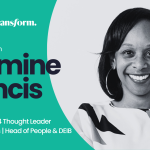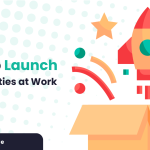
MixR Founder & CEO, Cecile Moulard, was recently featured in YPO’s Diversity & Inclusion Spotlight series. She discussed what inspired her to start MixR and her passion for scaling belonging and trust at work. The following is a Q&A between her and Dwayne Robertson, Diversity & Inclusion Program Manager at YPO.
What is MixR and what inspired you to develop this company?
MixR is an app that facilitates trust building in the workplace by empowering employees to create and join shared interest communities. Think of MixR as the power of Forum in your organization, in your people’s hands.
The inspiration to create MixR came from my life experiences as a non-executive director and a woman. Until I got to the boardroom, I had never encountered the glass ceiling. But my first public board experience was a slap in my face. I was made uncomfortable for being the token woman, in addition to being much younger than my male counterparts. I had to do something to address this, something big that could be scalable and cool.
My previous experience at Amazon came in very handy. MixR co-founder Dominique Lejade (YPO Gold Paris) and I started to do our research: we took the time to really understand the root causes and the unfortunate consequences of this lack of appreciation for diversity. We came to realize that the lack of trust was the consequence, and the lack of community was the cause of the unease I felt. In other words, the lack of opportunity to get to know the people you work with breeds ignorance and distrust towards one another. At MixR, we fix trust by fostering shared-interest communities in the workplace, where most people spend a majority of their time.
Why are the ideas of belonging and trust (B&T) so important in the workplace?
B&T is the connective tissue of any organization. The (missing) human piece. The pandemic and remote work has made this issue even more salient. The question is: can we reasonably continue to expect people to work in disconnection whether they're back at the office or still working from home? Do we really want to treat people merely as a unit of production? B&T breathes life into an organization. Everyone wants to be a part of a living organization.
How is B&T connected to diversity and inclusion (D&I)? What are the differences between the two concepts?
Belonging and trust is the natural diversity and inclusion booster. If diversity and inclusion was the trunk of the tree, belonging and trust would be the sap of the tree. While diversity and inclusion is about initiatives, programs and training, belonging and trust is about experience, conversations and meaningful connections. D&I and B&T need one another. This is why diversity and inclusion service providers partner with us: we are the foundation they can lean on to deliver high impact, sustainable solutions.
What role do employee affinity groups and employee resource groups (ERGs) play in promoting B&T?
ERGs started thirty years ago to help develop and support diversity in corporate America. Then they faded away a little and re-appeared about ten years ago. Since then, multiple entities, such as affinity groups, social clubs, support groups and ERGs, have sprouted in many organizations and have been directly contributing to B&T. ERGs are breaking silos, creating informal networks, developing friendships at work, supporting people in need of help inside and outside the organization, opening a safe space for conversations to happen, and offering opportunities to casually do fun things together.
How has the idea of B&T impacted your YPO journey?
My journey with YPO has been about belonging and trust. This is what happens in Forum. Forum for me is a community around shared interests where regular meetings, baked into confidentiality, allow for vulnerability, support, care, friendship and community to happen and grow in a safe space. Think of MixR as the power of Forum in your organization, in your people’s hands.
What additional strategies would you recommend to leaders to help move B&T forward in their businesses?
B&T is another term for “social capital," which is a good thing to have, especially in times of crisis. Leaders have many ways to improve their social capital and move the needle towards more B&T. Each of these ways involve flattening the organization, dismantling part of the pyramid, making people count and being heard so that they can give their best. Community is the least intrusive and most impactful way of doing just that. The future of organizations depends on B&T. Are you focusing on it? Now is the best time to be intentional about it.
We hope you enjoyed this Q&A. If you’re interested in learning more about MixR, don’t hesitate to reach out.







